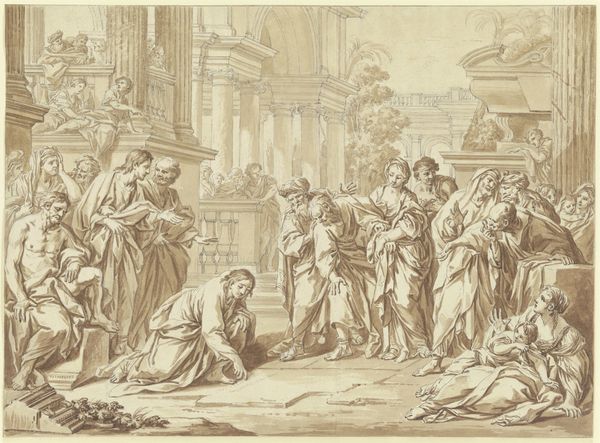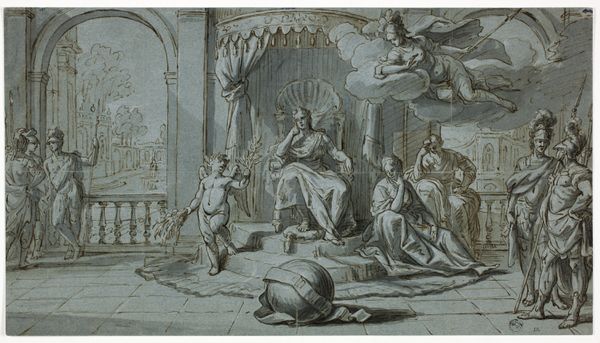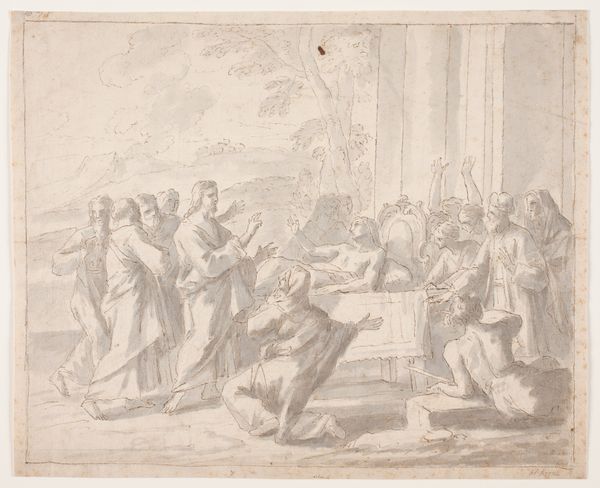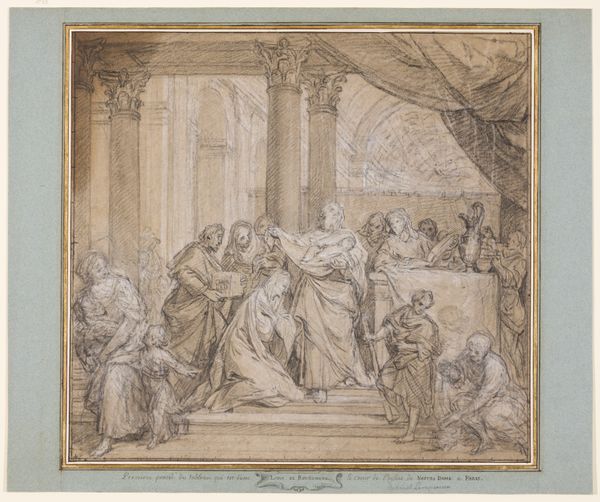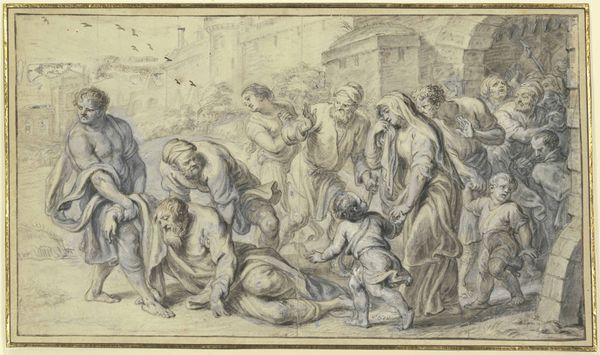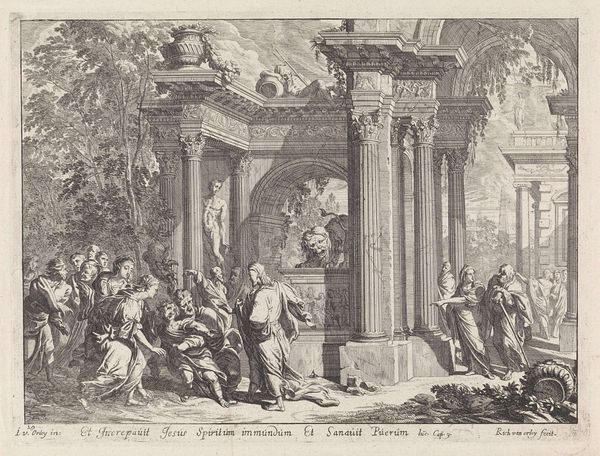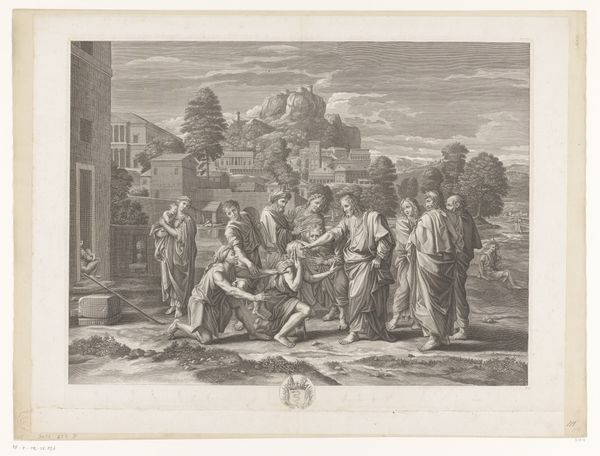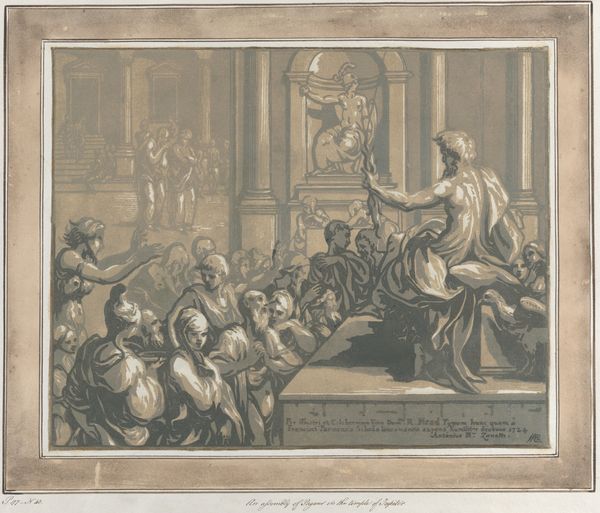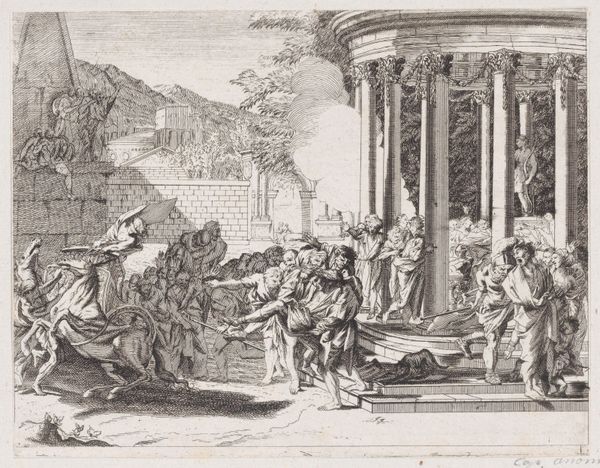
Achilles en de dochters van Lycomedes (?) (in doos met 43 tekeningen) 1703 - 1775
drawing, ink, pen
drawing
baroque
figuration
ink
pen
watercolour illustration
history-painting
academic-art
Dimensions: height 181 mm, width 197 mm
Copyright: Rijks Museum: Open Domain
Editor: This drawing, attributed to Louis Fabritius Dubourg, dating from around 1703 to 1775, depicts what is thought to be ‘Achilles Among the Daughters of Lycomedes.’ Executed in pen and ink, it has a somewhat staged, theatrical quality to my eye. What jumps out at you when you look at this drawing? Curator: What interests me immediately is the material evidence of its production and consumption. Consider the paper itself - what kind of workshop would have supplied it? The ink - where would that have been sourced? Each element tells a story about trade networks, access to materials, and the economic systems supporting artistic creation at this time. Editor: That’s fascinating. I tend to focus on the narrative aspect, but thinking about the materials used provides a whole different layer of interpretation. The precision of the lines and the detail suggests high-quality tools, right? Curator: Exactly. The artist's access to quality pens and ink, along with the paper itself, suggests a certain level of patronage and a developed artistic infrastructure. The drawing is a manufactured object – its existence relying on far more than just the artist's hand. Also, the "box with 43 drawings" it was stored with indicates an organization of material production and labor. Do we know if Dubourg created other drawings like this one, perhaps of other classical scenes? Editor: It is labeled as part of a series of 43 drawings. I wonder about the role that collections and groupings played? Curator: Groupings affect the meaning of an individual object; it makes one drawing from the set representative of something bigger, the system of its making becomes less obfuscated and abstracted from a single item. How the materials were combined, the labor that went into creating each piece, all shaped its meaning. Ultimately it encourages us to ask 'What were they made for?' And perhaps, 'Who were they made for?' Editor: That's really changed how I see the piece, less as a standalone artwork and more as a product of its time, reflecting the material conditions of its creation. I learned a lot today! Curator: And I was able to reconsider my presumptions by re-viewing my reading through your narrative lens; seeing how viewers immediately turn to the characters to form initial assumptions and impressions.
Comments
No comments
Be the first to comment and join the conversation on the ultimate creative platform.
